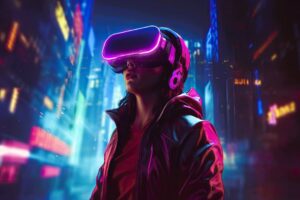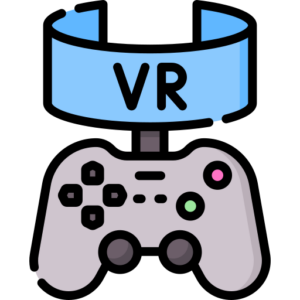Virtual Reality (VR) game engines serve as the backbone of immersive gaming experiences, providing developers with the tools and resources needed to bring their virtual worlds to life. In this article, we’ll delve into the world of VR game engines, exploring what they are, how they work, and why they are essential for creating immersive VR experiences.
What is a VR Game Engine?
A VR game engine is a software platform that provides developers with the necessary tools, libraries, and frameworks to create VR applications and experiences. These engines typically include features such as rendering engines, physics simulations, audio systems, scripting languages, and asset management tools, allowing developers to build, design, and optimize VR content with ease.
Example: Unity
Unity is one of the most popular game engines used by developers to create VR experiences. With its intuitive interface, powerful features, and extensive asset store, Unity has become a go-to choice for developers looking to build immersive VR games and applications. From indie developers to AAA studios, Unity offers a versatile and flexible platform for creating high-quality VR content.
How Do VR Game Engines Work?
At their core, VR game engines work by translating developer-created assets and code into interactive, three-dimensional worlds that players can explore and interact with in virtual reality. This process involves several key components, including:
Rendering Engine
The rendering engine is responsible for generating the visuals that players see in the VR environment. This includes everything from 3D models and textures to lighting and special effects. By leveraging advanced rendering techniques such as ray tracing and shader programming, VR game engines can create stunningly realistic visuals that immerse players in virtual worlds.
Physics Engine

The physics engine simulates the physical behavior of objects in the virtual environment, allowing for realistic interactions and simulations. This includes things like gravity, collision detection, and object dynamics. By accurately modeling the laws of physics, VR game engines can create dynamic and interactive environments that respond realistically to player actions.
Audio System
The audio system handles the spatialization and playback of audio within the VR environment. This includes sounds such as footsteps, environmental effects, and ambient noise. By using techniques such as binaural audio and positional audio, VR game engines can create immersive audio experiences that enhance the sense of presence and realism for players. Did you like the article? Read also about VR Game Demos.
Why Are VR Game Engines Important?
VR game engines play a crucial role in the development of immersive VR experiences, providing developers with the tools and resources needed to create compelling content. Without these engines, developers would need to build everything from scratch, which would be time-consuming, expensive, and impractical.
Example: Unreal Engine
Unreal Engine is another leading game engine in the VR space, known for its cutting-edge graphics, powerful tools, and robust development environment. With its visual scripting system, Blueprint, and extensive library of assets and plugins, Unreal Engine offers developers a comprehensive solution for creating high-fidelity VR experiences.
VR game engines are the building blocks of immersive VR experiences, providing developers with the tools and resources needed to bring their virtual worlds to life. From rendering engines and physics simulations to audio systems and scripting languages, these engines offer a comprehensive set of features that empower developers to create compelling VR content. As VR technology continues to evolve, we can expect to see even more powerful and versatile game engines that push the boundaries of what is possible in virtual reality.


